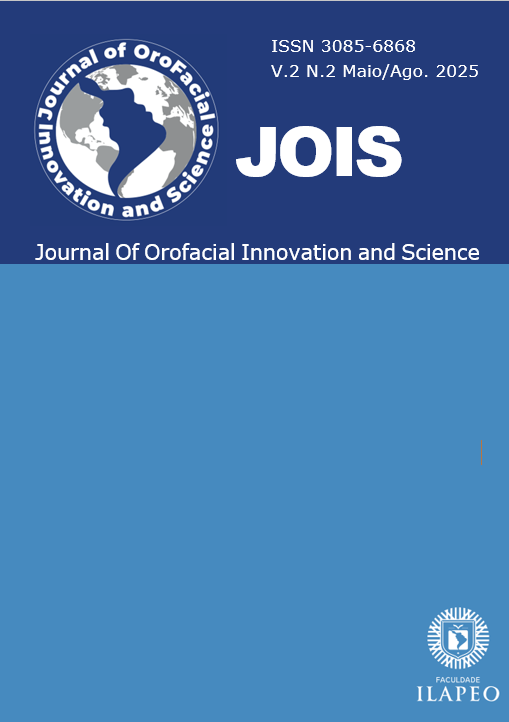Tomographic evaluation of incisive canal, canalis sinuosus and posterior superior alveolar canal
Keywords:
Canalis sinuosus; Incisive Canal; Maxillary Sinus; Cone-Beam Computed Tomography; Anatomical Variation.Abstract
The identification of the incisive canal, canalis sinuosus, and posterior superior alveolar canal minimizes the occurrence of surgical complications associated with neurovascular injuries. The aim of this study was to assess the prevalence of anatomical variations in the anterior and posterior maxillary regions using cone-beam computed tomography (CBCT). A total of 291 CBCT scans were evaluated for the presence and description of anatomical variations of the incisive canal (IC), alveolar extension of the canalis sinuosus (CS), and posterior superior alveolar canal (PSA). Regarding the IC, 74.23% of CBCT scans exhibited a single-channel pattern and normal diameter. Alveolar extension of the CS was detected in 17.15% of cases and was more frequent on the right side. The variation pattern of the PSA canal was detected in 15.46% of cases, with higher prevalence on the left side in females and on the right side in males. The molar region was the most common location of this extension bilaterally. Cone-beam computed tomography is a reliable and effective strategy for evaluating anatomical variations in the maxilla, including neurovascular structures such as the incisive canal, alveolar extension of the canalis sinuosus, and posterior superior alveolar canal.



